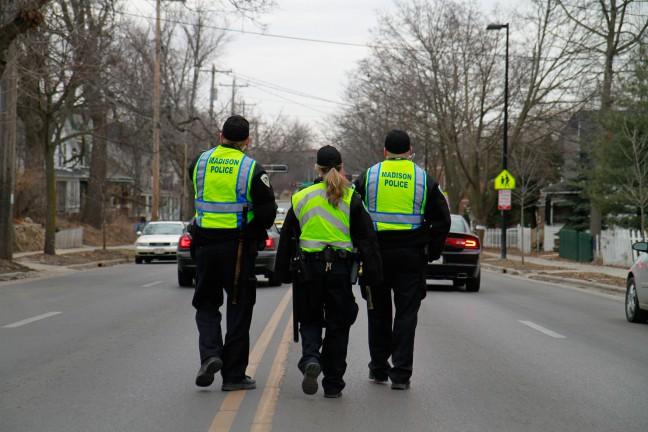It’s been 57 years since Phil Clark became the first black officer to serve on the Wisconsin State Police Force. Clark paved the way for minorities entering the force, and since his time in service, diversity has become a crucial component of the state patrol force’s mission.
In their 2018 annual report, the Wisconsin State Patrol listed diversity as the first of its eight key values. The report, which includes a strategic plan to be executed over the next five years, says the force will aim to “Recruit, hire and retain a diverse workforce,” and, according to Wisconsin State Patrol superintendent Anthony Burrell, that initiative is now well underway.
“One of our goals is to do some targeted recruiting in areas like Milwaukee, Madison, Green Bay, the Wausau area, so that we can specifically target minority communities,” Burrell told Wisconsin Public Radio.
Diversity has been a long-standing problem in the state patrol — more than 90% of current officers are white men. Burrell said such a lack of diversity negatively impacts the department’s ability to assimilate with and properly serve minority-heavy communities.
UWPD to implement new scanning technology to identify weapons
For a department to foster genuine empathy toward issues concerning minority groups, they must look to recruit officers who accurately represent the communities they serve. This is not a problem that has gone overlooked at the state level.
“We would like to see our agency, as many law enforcements across the country, would like to see a workforce of men and women that reflect the state itself, the community that they serve in,” Burrell told WPR.
Burrell’s efforts mark an important step in the diversification of a force, which has long struggled to include minorities. former Madison Chief of Police David Couper emphasized these efforts.
“It took us over 10 years to diversify a big, basically white, police department in Madison in the 1970s,” Couper said. “For 20 years I had to say that half of our recruits are going to be women and people of color, and only after 20 years did I end up with 10 -12% people of color in the police department.”
Burrell, who was appointed this past January, has been a champion for minority-focused recruitment efforts. His goals are guided by the idea that the diversification of a police department will inherently reduce tensions between the department and the community it serves.
Some researchers have disputed this idea, however, citing evidence that seems to suggest diversification efforts rarely lead to any change in a department’s public image or nature of enforcement. A 2003 study conducted for the Public Policy Studies Journal examined the relationship between diversification of police departments and rates of police brutality. The researcher, Brad W. Smith, said the results of the study were surprising.
“Though it may be intuitive to surmise that officer race influences officer decision making during encounters with citizens, research findings do not consistently support this belief,” Smith said.
Proponents of equal representation argue that, though statistics and research may not bode well for diversification efforts, a department’s impact on the community cannot be measured on such a macroscopic scale. Advocates for increased minority recruitment efforts like Burrell claim the relationship between a police force and the population it polices boils down to the connections which individual officers form with the community they serve.
Amidst ongoing tensions with university, UWPD removes graduate students from Bascom Hall
An individual with a specific racial identity may feel divided from their local or state police force if that force does not adequately represent their identity. As a minority, it may be difficult to see your community served by a department where only one in 10 officers share in your racial background and can empathize with the racially related struggles faced by you and your peers.
Seeing officers who share an ethnic or racial background with oneself may evoke a sense of increased trust and decreased apprehension toward local law enforcement, New York Police Department Sgt. Paul Grattan said.
“Police agencies that are rich in diversity are simply more likely to garner individual trust among a group of citizens because the agency is reflective of the community and is inclusive of officers of many backgrounds and experiences,” Grattan told Rasmussen College in a 2018 article.
Though Wisconsin police departments at the local and state level still have a long road ahead of them in terms of diversification, Wisconsin residents should be confident that department heads are not only aware of the issue, but are actively working toward a police force that mirrors the populous it swears to protect.
John Grindal ([email protected]) is a freshman studying computer science and neurobiology.




















